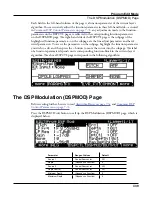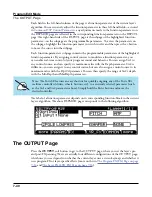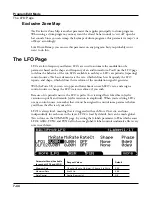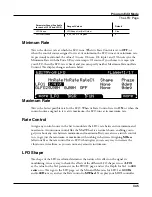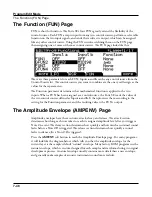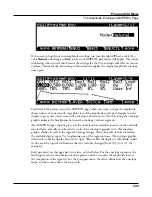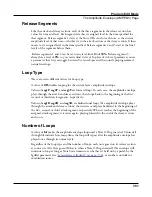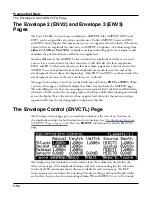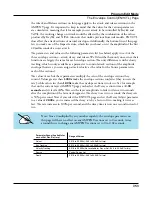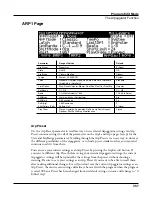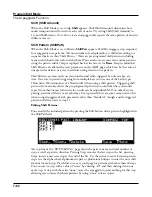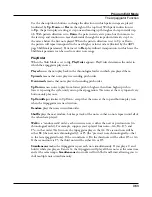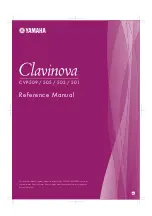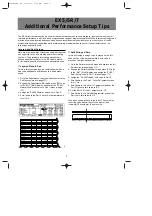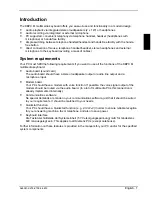
Program Edit Mode
The Amplitude Envelope (AMPENV) Page
7-51
Release Segments
Like the attack and decay sections, each of the three segments in the release section has
values for time and level. Each segment reaches its assigned level in the time specified for
that segment. Release segment 1 starts at the Note Off event for each note, at the current
amplitude level of that note—whether it’s in the attack section or the decay section. It then
moves to its assigned level in the time specified. Release segments 2 and 3 start at the final
levels of the segments before them.
Release segments 1 and 2 can be set to any level from 0 to 150%. Release segment 3
always has a level of 0%, so you can’t adjust its level. In place of its Level parameter you see
a parameter that lets you toggle between User envelopes and the sound’s preprogrammed
natural envelope.
Loop Type
There are seven different values for Loop type.
A value of Off disables looping for the current layer’s amplitude envelope.
Values of seg1F, seg2F, and seg3F are forward loops. In each case, the amplitude envelope
plays through the attack and decay sections, then loops back to the beginning of the first,
second, or third attack segments, respectively.
Values of seg1B, seg2B, and seg3B, are bidirectional loops. The amplitude envelope plays
through the attack and decay sections, then reverses and plays backward to the beginning of
the first, second, or third attack segment, respectively. When it reaches the beginning of the
assigned attack segment, it reverses again, playing forward to the end of the decay section,
and so on.
Number of Loops
A value of Inf makes the amplitude envelope loop until a Note Off is generated. Values of 1
through 31 indicate how many times the loop will repeat after the amplitude envelope has
played once through its normal cycle.
Regardless of the loop type and the number of loops, each note goes into its release section
as soon as its Note State goes off (that is, when a Note Off is generated). The envelope will
continue to loop as long as Note State remains on, whether it’s held on by a pedal, by the
"Ignore Release (IgnRel)" on page 7-30
), or another controller or
modulation source.



